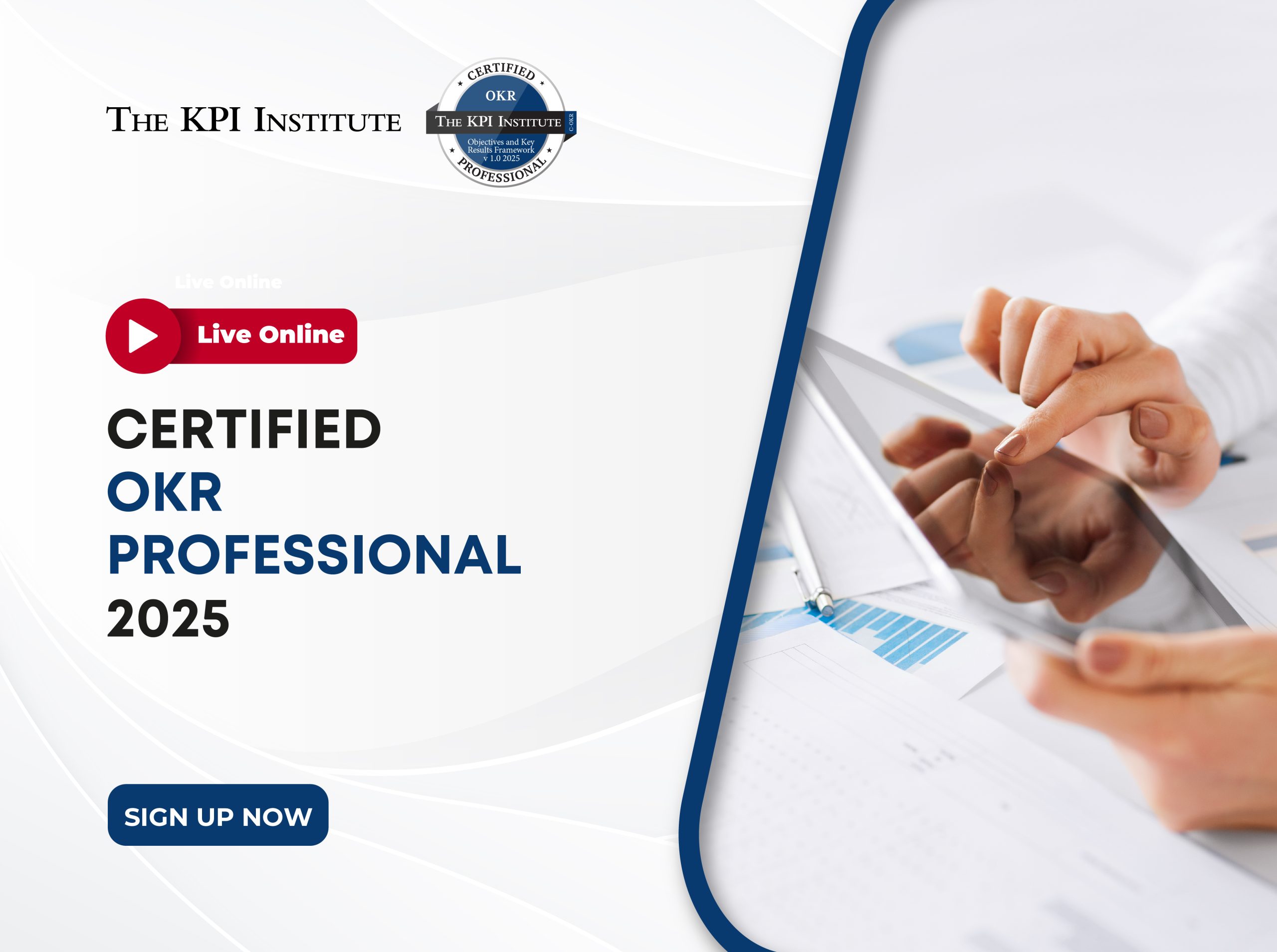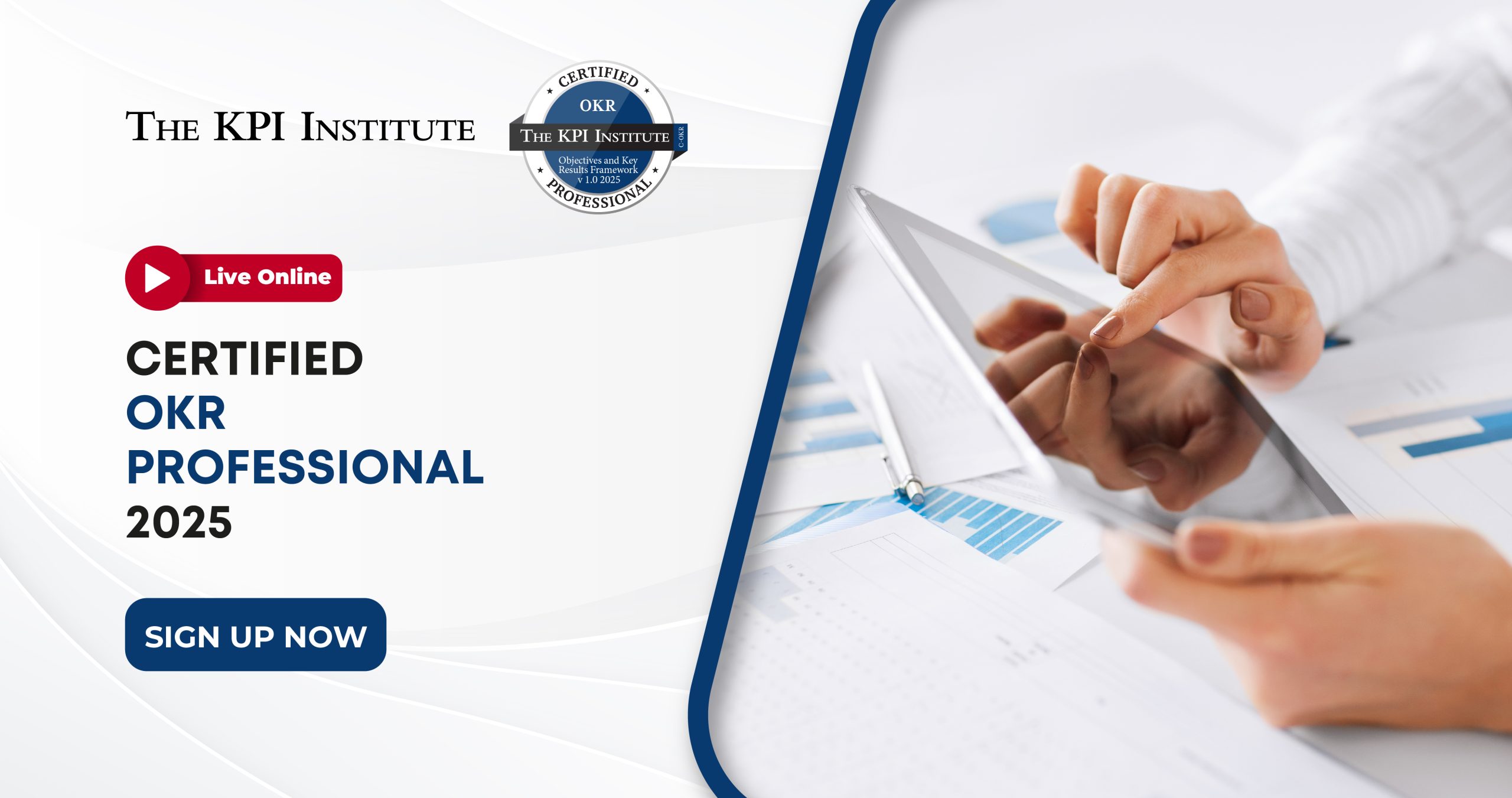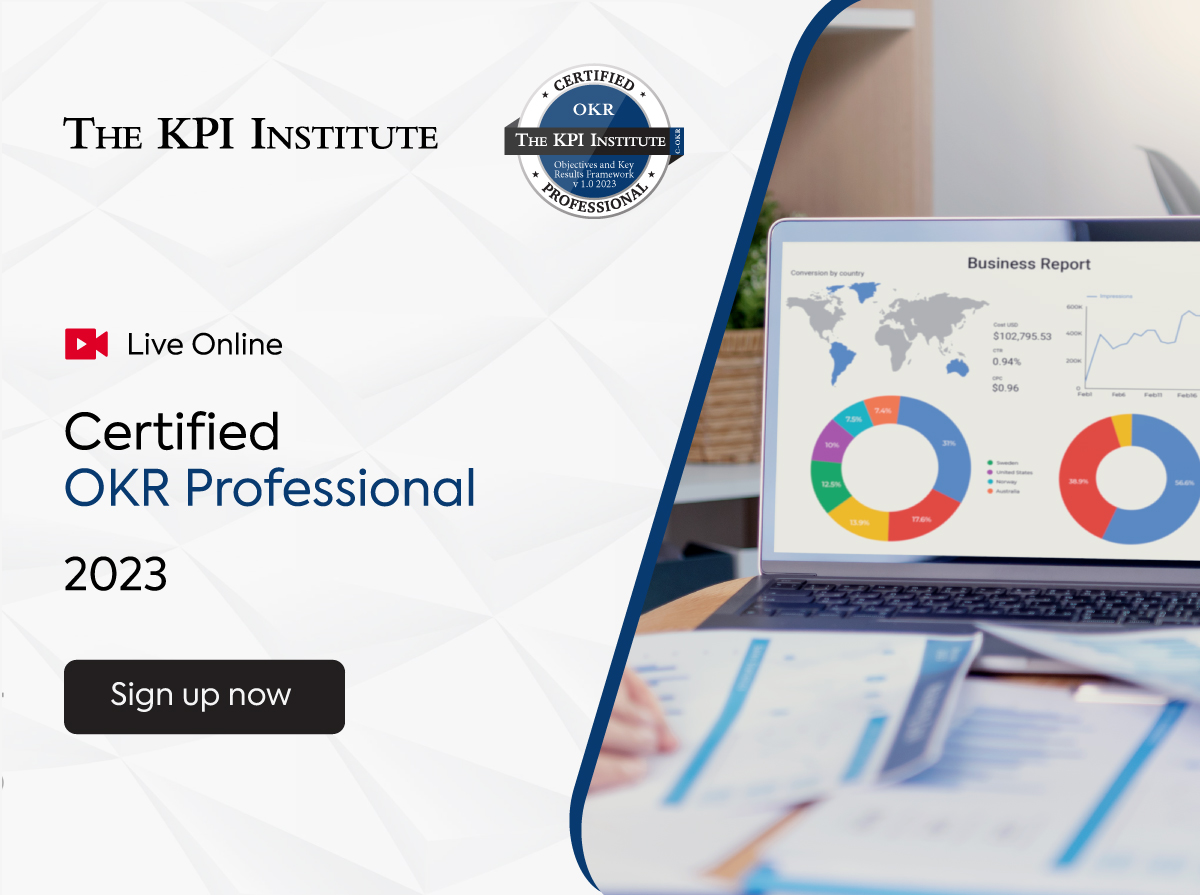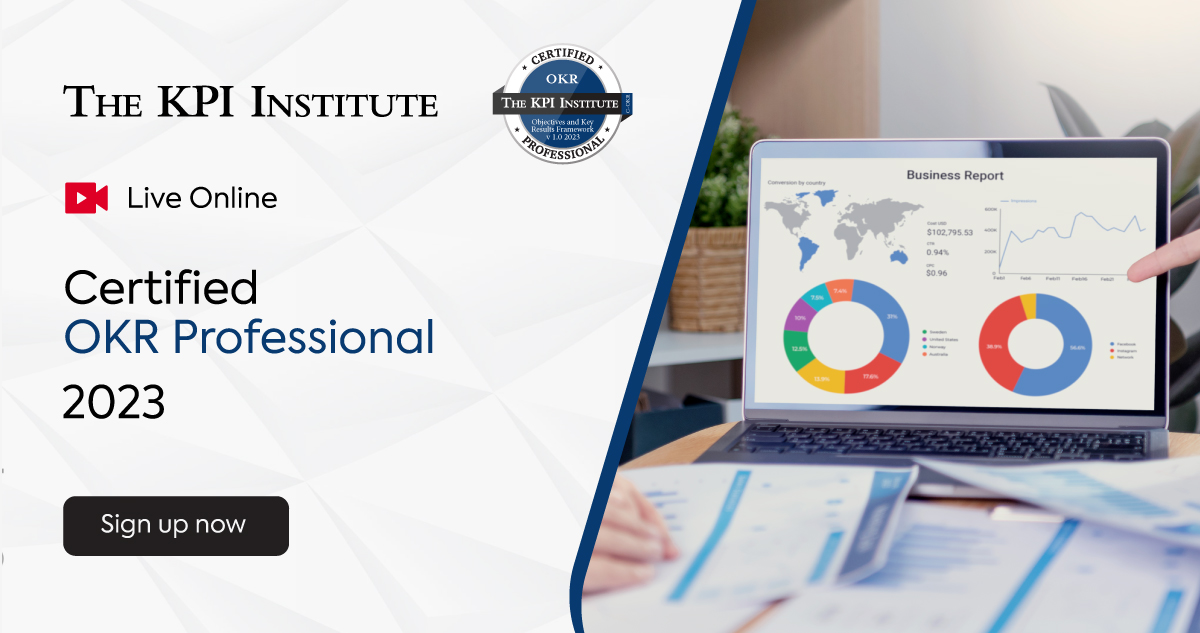
Master organizational success with The KPI Institute’s Certified OKR Professional course
December 31st, 2024 Posted by Kimberly Tilar Certification 0 thoughts on “Master organizational success with The KPI Institute’s Certified OKR Professional course”
Have you ever wondered how to build a high-performance culture in the organization or how to create a performance management process that responds to dynamic business environments? The answer lies in the power of objectives and key results (OKRs) – the modern, results-driven approach to goal-setting and performance management. The Certified OKR Professional (C-OKR) course delivered by The KPI Institute aims to empower individuals with the strategic tools to elevate their organizations to new heights.
Course overview
The C-OKR course delves into the art and science of goal-setting and execution. Over a comprehensive duration of engaging learning experiences, participants will explore the principles of OKRs and their applications in various contexts. Participants can confidently lead their teams and organizations towards greater achievements and sustainable growth by mastering the course’s learning objectives:
- Differentiate between objectives, Key Results and Initiatives;
- Recognize different types of OKRs;
- Acknowledge the benefits of stretched goals;
- Understand OKR setting in different contexts;
- Apply best practice techniques to align OKRs across the organization;
- Comprehend the review and decision-making process.
Benefits and importance
Embark on a transformative journey as a C-OKR Professional and open doors to global recognition and a myriad of exclusive benefits, such as:
- Support fast decision-making by fostering constant feedback and communication;
- Access an innovative learning experience based on a three-stage educational process;
- Obtain premium recognition as a Certified OKR Professional by completing a unique international learning program;
- Expand your business network by becoming a member of the international Certified OKR Professionals Community;
- Champion the use of a rigorous OKR process within organizations;
- Obtain 40 CPD credits to include in your CPD records for your professional body, institute, regulator, or employer
Course structure and methodology
The C-OKR course is designed to offer maximum flexibility to participants, with both online and face-to-face options available. This ensures participants can learn at their own pace and in a format that best suits their preferences and schedules. The program’s comprehensive learning materials and innovative teaching methodologies, such as practical exercises and case studies, facilitate an engaging and dynamic learning experience.
Course syllabus
The Certified OKR Professional course empowers participants to grasp the fundamentals of OKRs, from crafting inspiring objectives and aligning them at various levels to fostering a culture of change management. It provides a comprehensive toolkit for revolutionizing goal-setting practices. Additionally, the course delves into adapting OKRs to diverse environments, enabling the effective construction of performance management systems based on OKRs and leveraging OKRs as powerful learning tools.
Flexible learning options
By understanding the varying needs of potential learners, The KPI Institute offers flexible learning options for the C-OKR course. Participants can choose between self-paced modules or attend the course on multiple dates to accommodate their schedules. This adaptability makes mastering OKRs accessible to professionals from various industries and career stages.
Certification and recognition
Upon successful completion of the C-OKR course, participants will receive a prestigious certification from The KPI Institute, recognized worldwide for its commitment to excellence in organizational performance:
- Certificate of Completion
- Certificate of Attendance
- Certified Professional diploma in OKR
- CPD Certificate of Attendance
Embark on your journey towards becoming a Certified OKR Professional and steer your organization towards unprecedented success. Contact The KPI Institute today to enroll in the Certified OKR Professional program and take the first step towards mastering the art of organizational success.





